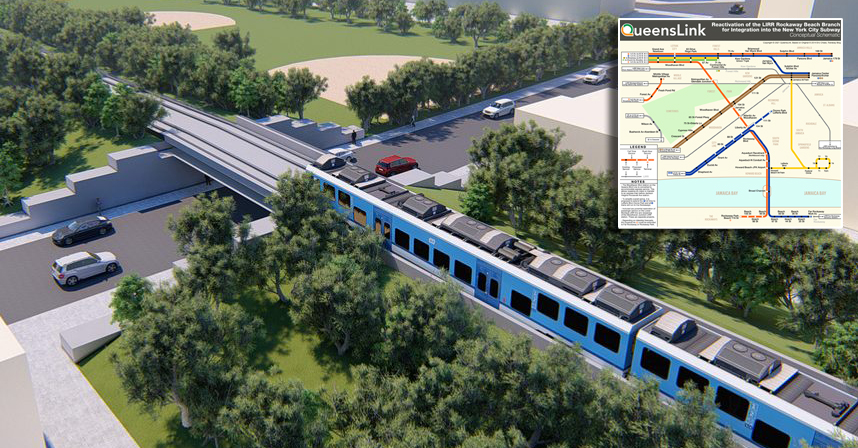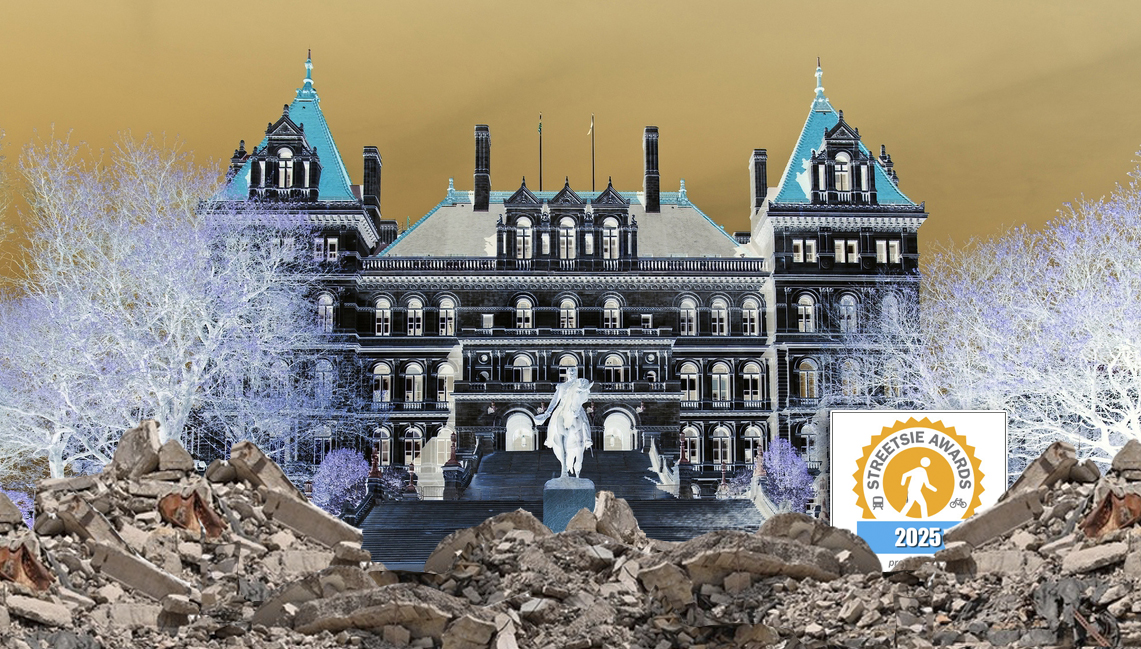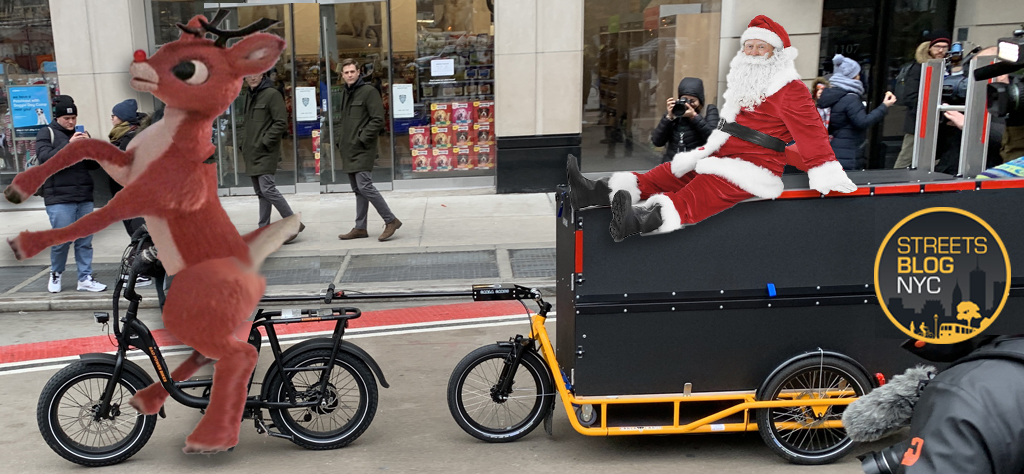"The city is selling its streets," blared an early April article in The New York Post. The sell-out, as the paper pitched it, was a "shocking rule change" from the city’s "anti-car" Department of Transportation, which could formally allow restaurants to set up seating on Open Streets and in public plazas. "I don’t recall reading that in the Communist Manifesto," quipped Council Member Joann Ariola, when she heard of the news.
But anyone who traverses these spaces regularly knows that this seemingly Marxist — and borderline Parisian — plot has been underway for some time. Eateries, cafés and other businesses are already able to demarcate areas for their own chairs and tables as part of NYC DOT’s Open Streets program, and in public plazas, too, if the organization that operates said space holds a concessions agreement with the agency.
Under the new proposed rule up for discussion, private setups would be limited to 33 percent of the total square footage on any pedestrian space. This is actually a decrease from the pandemic era, when the city permitted businesses to use up to 80 percent of any public plaza. The proposed rule brings it back down to less than half of that — to balance out public and private activities —
The city is simply putting a formal ratio on what has up until now been fairly informal: people enjoying a drink or bite alfresco on either the street or in a plaza. Policy-wise, that makes sense: we don’t want public space to be fully privatized, and this would help limit that. In practice, though, it almost feels unnatural—and, perhaps, even impractical. (Anyone have a measuring tape for that 33 percent?)
But a full "capitalist" takeover? Hardly.
Per the City Charter, a rule change just jots this bureaucratic minutiae down on paper for clarity—in this case, for the both private entities who steward these public spaces and the businesses themselves. It’s more process than pomp. A no-frills hearing on Wednesday muted some alarm bells, even as it also raised genuine issues of public space management.
The hour-long Zoom session was meant to merely collect public feedback for review before a decision was made, in addition to what was submitted online or via snail mail. NYC DOT officials present were not allowed to answer questions, which largely iced out the chances of any tense back-and-forths.
"Enough is enough," declared Mitchell Grubler, a member of the Bowery Alliance of Neighbors. The city had already gone too far by "privatizing the curb lane for permanent dining sheds," Grubler said, referring to the city’s outdoor dining program — which in fact serves far more people than the parking spaces it replaces.
But as Naomi Klein writes, conspiratorial thinking often holds glimmers of the truth, if only before veering off course. The same went for the naysayers on Wednesday; amidst accusations of private industry hell bent on gobbling up the shrivels of car-free space New Yorkers hold onto, some concerns are real.
How could the city ensure that publicly accessible seating was always available? Where would people relieve themselves in a city allergic to public bathrooms? And as Open Streets stare down a funding cliff, would this allow the city to capture revenue—or help justify cuts?
Attendees were only unmuted if they used the "raise hand" function; they then had three minutes to speak. And if talking turned tangential, Oscar music shuffled them off the virtual stage. About 45 minutes in, the queue had whittled down, with some minutes-long pockets of silence.
Emma Culbert, president of the SPaCE ("Seward Park around Canal East") Block association, called the Open Streets program "predatory" (its prey being public land). .
Clubert’s main gripe was with Dimes Square, a scene-y Open Street at the end of Canal Street, whose operating hours city officials recently thinned after a handful of residents got the ear of the City Council, citing quality of life concerns, like noise and trash.
Le Dive, a popular wine bar there, had 115 chairs set up for outdoor seating in the roadway the night before, Culbert said. (She had counted herself.)
"Before they were unleashed onto Canal Street," she said, the number was about half of that. "This is an outrageous land grab." (The City Council specifically prohibited Le Dive from setting up on the sidewalk.)
There is a case to be made that the rule best benefits Business Improvement Districts, which typically have an arrangement with property owners where some portion of revenue goes to maintenance, landscaping and programming. Thus: more seating, more revenue. Kurt Cavanugh, a vice president at the Flatiron-NoMad Partnership, a BID in Midtown Manhattan, supported the rule change for that reason.
"All revenues made from concessions are reinvested back into the open space," he testified.
But Saskia Haegens, an organizer of the popular Vanderbilt Avenue Open Street, reminded the room that Open Streets are also run by all-volunteer groups. Citing a loss of city dollars, organizers shaved down the Vanderbilt Avenue Open Street’s operations from three days of the weekend to one for the upcoming season.
"If we lose access to the funding we receive to run the program, it’d be especially important to access new options for revenue," Haegens said.
Still, Haegens voiced their support for codifying the program’s benefits into law. Outdoor seating for restaurants, they said, "allowed businesses on Vanderbilt Avenue and around the city to survive the pandemic — and beyond that."
The rule change marks the latest installment in the saga of figuring out what stays and what goes from pandemic-era New York City. To many, the city loosening up even the slightest bit about dragging a chair or table into the street, to simply just be outside, was one of the few bright spots to emerge from an otherwise dark time. To others, it was yet another symptom of urban disorder that has yet to be reigned in.
Normalizing the pandemic era regulatory flexibility has come with its own bureaucratic bumps, no doubt. But five years later, the programs that re-envisioned city streets for something else besides car use remain, somehow surviving what feels like an endless onslaught of operational and political barriers. That means something.
Putting a percentage on where a bar can set up some stools — when, five years ago, this wasn’t even possible — isn’t going to change that.






